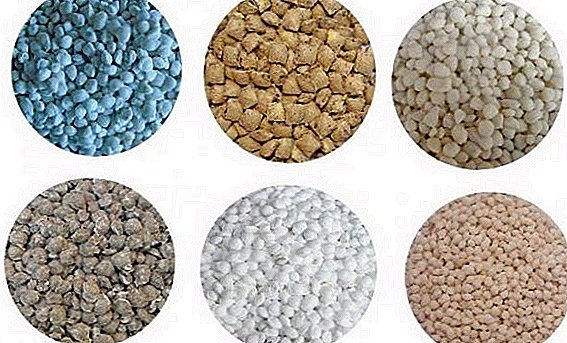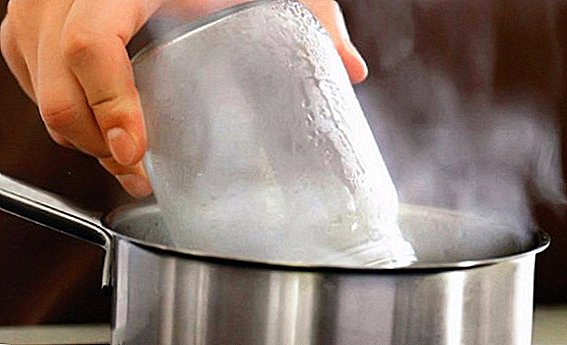 During the period of seasonal preparations for the winter, the question of sterilization of cans becomes especially acute, since the cleanliness and sterility of the dishes where the preservation will be stored is the key to its excellent taste, aroma and safety for human health.
During the period of seasonal preparations for the winter, the question of sterilization of cans becomes especially acute, since the cleanliness and sterility of the dishes where the preservation will be stored is the key to its excellent taste, aroma and safety for human health.
What is sterilization of cans for?
Oddly enough, but many housewives ignore the process of sterilizing cans, and it is in vain. Sterilization - it is a method of destruction of all types of microbes by heat treatment of containers. Thanks to him, blanks are sterile and can be stored for a long time.  There are several options for how to sterilize jars:
There are several options for how to sterilize jars:
- for a couple;
- using a microwave oven;
- in the oven;
- in a double boiler;
- through pasteurization.
Each method has its own advantages and features. Often, the hostess choose the appropriate option, based on the possibilities and maximum simplicity.
Familiarize yourself with recipes for making jam: cherry jam with stones and white cherry jam; jams of apples, quince, wild strawberries, red and black currants, strawberries, melons.
Preparing cans
Before you start conservation, you need to prepare the container and carefully check it. Start checking with a visual inspection of the cans for the presence of cracks, chips, scratches, etc. Particular attention should be paid to the neck, because chips on it can lead to depressurization of the contents, and, as a result, ingestion of bacteria and rapid deterioration of preservation. Any, even minor defects can cause that during the filling of the container with a hot product, it will simply burst in the hands.  To ensure the sterility of the container should be aware of its thorough cleaning. For washing use ordinary baking soda or laundry soap. It is not recommended to use modern chemicals, as they are poorly washed out and can remain in small quantities on glass, which will adversely affect both the conservation itself and the health of the person who will use it.
To ensure the sterility of the container should be aware of its thorough cleaning. For washing use ordinary baking soda or laundry soap. It is not recommended to use modern chemicals, as they are poorly washed out and can remain in small quantities on glass, which will adversely affect both the conservation itself and the health of the person who will use it.
During seaming it is necessary to use new covers, without corrosion and scratches, otherwise it may affect the quality of the workpiece and its shelf life.
Important! For conservation, it is recommended to use banks that have already been used at least once. Tempered glass in such a container is more durable, it is not afraid of temperature changes and is resistant to thermal effects. If the banks are new, then they need to hold some time under a stream of hot water.
Preparation of vegetables and fruits
In the course of conservation is equally important the proper preparation of fruits and vegetables. To begin with, you should sort the products, remove all spoiled, waste and sluggish raw materials. Very different fruits complicate the process of seaming, because large vegetables require a longer time to cook than small ones.  Fruit and vegetables should be removed leaves, all twigs, roots.
Fruit and vegetables should be removed leaves, all twigs, roots.
Did you know? Cutting and peeling vegetables into blanks is necessary with a stainless steel knife, since other materials oxidize when in contact with food. This will adversely affect the quality of the blanks.
Then you can start washing products. It is worth a little shaltur here, as the whole process of seaming goes down the drain. Wash vegetables and fruits thoroughly under running water several times. Especially contaminated fruits are recommended to soak in cool water, and then rinse. Small cucumbers are recommended to be washed with a stiff brush of natural bristles.
We advise you to read about the methods of harvesting vegetables for the winter: onions, cabbage (white cabbage, cauliflower, red cabbage, broccoli), green peas, pepper, zucchini, asparagus beans, squash, as well as cooking pickle in a jar, pickles and ways of pickling mushrooms.
Sterilization covers
Sterilization of covers is an obligatory norm during the highest quality preparation of dishes for preservation. Covers are carefully inspected for various defects, damage, dents or corrosion. For blanks suitable tin products with a smooth surface, in which the diameter of the inner gum strictly corresponds to the diameter of the cover.  There are several options for disinfecting covers:
There are several options for disinfecting covers:
- Boiling. The easiest and most ancient method that allows you to quickly and easily disinfect products. It is necessary to pour a little water into the container, bring it to a boil and lower the lids for a few minutes. Plastic products boil from 2 to 5 minutes, metal stand 10 to 15 minutes.
- Steamed. Ideal for rubber seal covers. To do this, take a container with water, set the top of the lattice or sieve, then place the lids. Products douse steam for 10-15 minutes, then remove and spread on a clean towel.
- In the oven. Steel lids without internal rubber can be quickly and easily heated in the oven for 10 minutes. This method is relevant for twisting products (twist).
- With help special solution. Many prefer to disinfect the caps, placing them for 10-15 minutes in a specially prepared solution, which is based on manganese, alcohol or furatsilin. This method is universal and suitable for all types of caps, but is rarely used now.
Important! It is forbidden to sterilize metal covers in a microwave oven, as this may lead to its breakage. Only nylon products can be disinfected in this way.
Sterilization over steam
One of the oldest and proven methods of preparing dishes for preservation is sterilization over steam. To hold it, you will need a large container, for example, a saucepan, and a grid with holes, which will be used for packaging:
- The pot is filled for 2/3 with water and the grid is installed (in the absence of a special grid, it can be replaced with a colander or sieve).
- Banks set on the grid neck down.
- After the water boils, they note the time: the container for 1 liter is disinfected for 10 minutes, 2-3 liters for 15 minutes.
- Clean tare put on the towel neck down.
Steam treatment is considered complete in the case when water drops begin to flow along the inner walls of the can.
Read also about the popular methods of harvesting tomatoes: tomatoes in their own juice, tomato juice, lettuce with tomatoes, green tomatoes, "Yum fingers", tomato jam.
Oven sterilization
This method is convenient in that it allows you to significantly save time and at the same time process a large number of containers:
- In a cold oven on the grid put the container neck down.
- The oven is heated to a temperature of 150 degrees.
- Stand the dishes for 10-15 minutes.

Important! Wet jars should be installed on the grate upside-down so that the water can evaporate.
Microwave sterilization
The method of disinfection of cans using a microwave oven is the fastest, but it requires adhering to some subtleties. It is forbidden to put into the oven empty glass containers and any metal objects, so the processing of the cans is carried out without lids:
- Banks filled 1/3 of the water, set in the microwave.
- The oven is turned on for 2-3 minutes at full power.
In order for the banks during the heat treatment not to burst, you can not pour water in them, but simply put a glass of water on the rotating plate.
Sterilization in a double boiler
If there is a double boiler in the house, you can use it as a dish sterilizer. For this:
- Water is poured into the tank.
- On top of the grid set the container upside down, cover with a lid.
- Stand banks for 15 minutes.
For sterilization, you can also use a slow cooker. The processing of glass containers in this device is identical. 
Pasteurization
Heat treatment of glass containers and their contents at a temperature below 100 degrees called pasteurization. To achieve the desired effect - the destruction of all bacteria and microorganisms - banks should be heated at a temperature of about 85 degrees for a long time.
Did you know? Sterilization and pasteurization differ exclusively by the effects of different temperature regimes, all other process conditions are similar.
The optimal method of pasteurizing dishes, which allows you to control a given temperature, is considered to be heated in the oven. After thorough washing the container is placed in the oven, heated to 80-90 degrees and heated until the liquid completely evaporates from its surface. 
Recommendations
Before you can sterilize the jars, consider a few important recommendations:
- for preservation, use only new, high-quality covers without scratches, damages, bends, with a rubber gasket tight to the edge;
- carefully inspect glassware for damage, chips, scratches or cracks;
- during the heat treatment of the dishes in the oven should open the door only after the temperature is reduced to 80 degrees;
- for cleaning lids and cans use sparing means - baking soda, salt, laundry soap;
- when washing containers, use only a new, clean sponge;
- do not turn the jars upside down after heat treatment;
- after treatment, do not touch the neck with your hands, since the effect of the procedure is reduced to zero.
Learn how to save apples, pears, plums, cherries, apricots, strawberries, blueberries, chokeberries, sunberry, yoshtu, sea buckthorn for the winter.
Such simple tips will allow to achieve the most effective disinfection of glassware and prevent spoilage damage.  There are a lot of methods for sterilizing cans at home, so each housewife will be able to choose for himself the most pleasant and least troublesome. The main thing in the preservation process is to remember that the quality of the heat treatment of the container and the lids will determine whether the home-made products survive to the point where they want to eat.
There are a lot of methods for sterilizing cans at home, so each housewife will be able to choose for himself the most pleasant and least troublesome. The main thing in the preservation process is to remember that the quality of the heat treatment of the container and the lids will determine whether the home-made products survive to the point where they want to eat.












